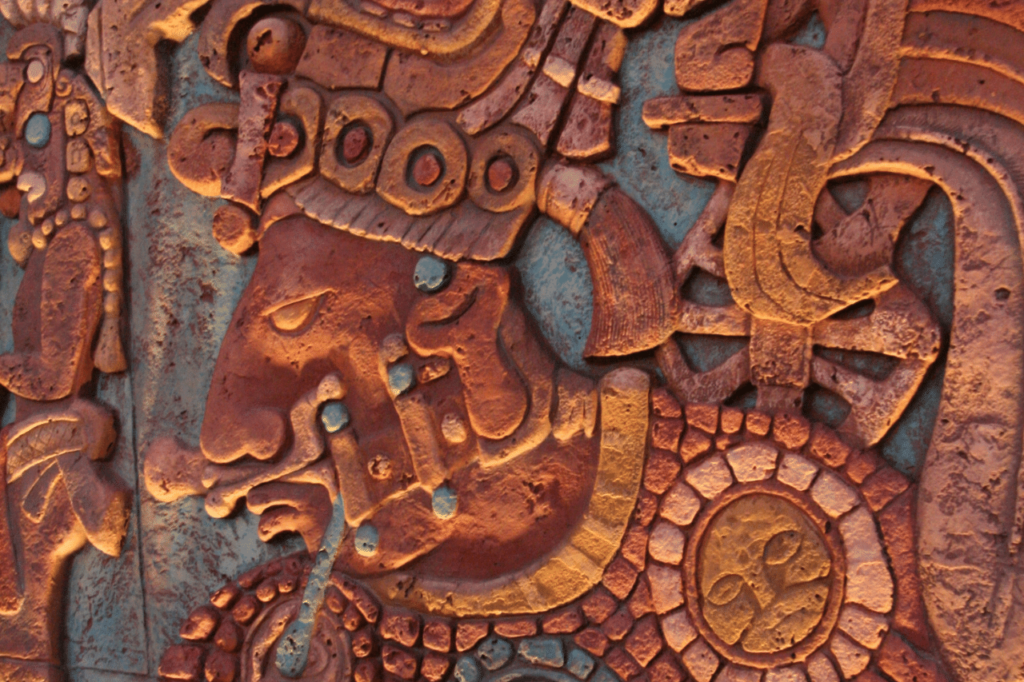Tezcatlipoca, one of the most important deities in the Aztec pantheon, is a figure shrouded in mystery and complexity. Also known as the “Smoking Mirror,” Tezcatlipoca holds a prominent place in Aztec mythology and religious beliefs. His multifaceted identity and diverse roles make him a fascinating deity to study and understand. This article aims to provide a comprehensive exploration of Tezcatlipoca, shedding light on his various aspects, symbolism, and significant role in Aztec society.
Tezcatlipoca: The “Smoking Mirror”
Tezcatlipoca is often referred to as the “Smoking Mirror,” a name that reflects his association with mirrors made of obsidian, a shiny black volcanic rock. The obsidian mirrors were believed to possess magical and divinatory powers, allowing Tezcatlipoca to see into the hearts and minds of humans. This attribute made him a deity of knowledge and wisdom.
The colors black and red are strongly associated with Tezcatlipoca. He is commonly depicted wearing a black obsidian mask adorned with red designs, representing his dominion over the night sky. This portrayal symbolizes his connection to darkness, mystery, and transformation. It is important to note that Tezcatlipoca is often depicted as either male or female, indicating a fluidity in gender within Aztec cosmology.
Tezcatlipoca: The Creator of the Sky and Earth
Tezcatlipoca plays a vital role in the creation of the world according to Aztec mythology. In the Aztec creation story, the earth undergoes a series of catastrophic transformations, including a great flood. To restore order, Tezcatlipoca and his brother Quetzalcoatl transform into snakes and descend into the Underworld to obtain the bones of the previous creations. Together, they defeat the Earth Goddess Tlalteotl and use her body to create the sky and earth.
This myth highlights Tezcatlipoca’s creative power and his role in shaping the world. His association with creation signifies his importance as a foundational deity in the Aztec pantheon.
Tezcatlipoca: Lord of Power and Discord
Tezcatlipoca is a complex and unpredictable god who represented both benevolence and malevolence. He possessed the ability to bestow great fortunes or bring misfortune and destruction. As a patron of the wealthy and powerful, he could grant them favor and protection. However, he could also bring illness, poverty, and misfortune to those who did not honor him.
The Aztecs believed that Tezcatlipoca’s will was capricious and often sought to appease him through ceremonies, rituals, and banquets. These efforts aimed to maintain his favor and avoid the wrath that could lead to calamity. The extent of Tezcatlipoca’s influence over Aztec society is evident in their reverence and constant homage to him.
Tezcatlipoca’s Various Names and Roles
Tezcatlipoca’s identity extends beyond his role as a creator and bringer of fortune. He embodies various attributes and takes on different forms and names in Aztec mythology. As an omnipotent and omnipresent force, Tezcatlipoca is viewed as the prime source of universal power.
In addition to his creative power, Tezcatlipoca is a destroyer and a sower of discord. He is known for inciting wars and conflicts, as well as testing the loyalty and courage of individuals. His multifaceted role in Aztec society is evident in the Telpochcalli, a school for commoners, where he holds patronage.
Another significant role Tezcatlipoca plays is in the selection of the Ixiptla, a young man chosen to serve as his living image for a year. The Ixiptla would be lavished with riches and worship during this period but would ultimately be sacrificed in a solemn ceremony as a representative of Tezcatlipoca. This practice highlights the depth of Tezcatlipoca’s veneration and the sacrifice required to honor him.
Tezcatlipoca and Quetzalcoatl: A Complex Relationship
The relationship between Tezcatlipoca and his brother Quetzalcoatl is characterized by constant power struggles and conflicts. These two deities represent contrasting forces within Aztec mythology.
Tezcatlipoca’s attempts to undermine and defeat Quetzalcoatl are evident in various mythological narratives. One notable instance is when he tricked Quetzalcoatl into drinking a potent potion that led to his downfall. This action demonstrates Tezcatlipoca’s cunning nature and his desire to assert his dominance over his brother.
The rivalry between Tezcatlipoca and Quetzalcoatl serves as a reflection of the eternal struggle between order and chaos, light and dark, creation and destruction within the Aztec cosmology. Their complex relationship adds another layer of intrigue to the already enigmatic figure of Tezcatlipoca.
Tezcatlipoca’s Animal Forms and Symbolism
Tezcatlipoca is closely associated with various animal forms, each carrying symbolic significance. One of his primary animal representations is the jaguar, an animal revered for its strength, agility, and connection to the night. As a jaguar, Tezcatlipoca embodies the power and unpredictability that characterize his nature.
In addition to the jaguar, Tezcatlipoca is also associated with the coyote, lobster, monkey, and turkey. These diverse animal representations showcase the breadth of his influence and the multiple aspects he embodies. It is believed that the animals present in Moctezuma’s palace may also represent Tezcatlipoca’s animal forms on earth.
Conclusion
Tezcatlipoca, the enigmatic “Smoking Mirror,” played a multifaceted and influential role in Aztec society and mythology. His identity as a creator, destroyer, and patron to commoners underscores his complex and powerful nature. Tezcatlipoca’s representation of power, creativity, and paternalism, combined with his ability to bring misfortune and destruction, made him a central figure in the Aztec pantheon.
The Aztecs believed in Tezcatlipoca’s authority and regularly paid homage to him to win his favor and protection. This article only scratches the surface of the vast mythology and religious practices associated with this captivating deity. Further exploration into Tezcatlipoca’s realms of influence will reveal an even greater appreciation for his profound significance in Aztec culture.
